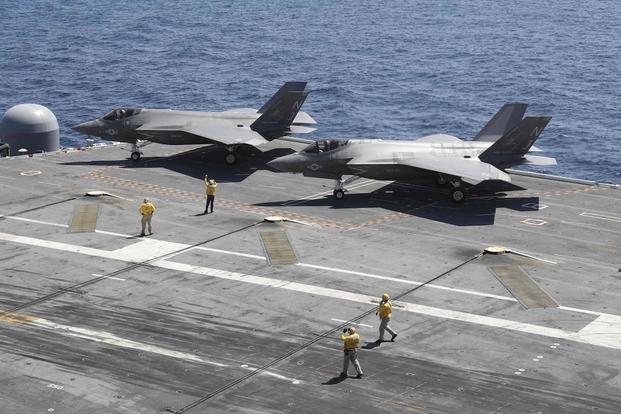As Congress eyes the possibility of yet another continuing resolution in lieu of a defense budget for 2018, Navy Secretary Richard Spencer this week put the cost of such a move in stark terms.
Since 2011, Spencer told an audience at the U.S. Naval Institute's Defense Forum Washington, continuing resolutions have cost the Department of the Navy roughly $4 billion.
And that's money, he added, that is badly needed to build the service up to the strength required to face contemporary threats.
"Since 2011, we have put $4 billion in a trash can, put lighter fluid on top of it and burned it," he said. " ... It's enough money that it can buy us the additional capability and capacity that we need."
Spencer, who was sworn in to his new post in August, said the money lost through continuing resolutions would have paid for a squadron of F-35 Joint Strike Fighter aircraft, two Arleigh Burke-class guided-missile destroyers, 3,000 Harpoon anti-ship missiles, or 2,000 Tomahawk land attack missiles.
Continuing resolutions are stopgap measures designed to freeze funding at current levels in lieu of new budget appropriations.
Top military brass have spoken often about how CRs hamstring defense planning, keeping leaders from investing in new acquisition programs and making future resourcing unpredictable.
A CR can also create de facto hiring freezes for civilian workers and push back needed training and maintenance.
In the last six years, since the Budget Control Act was enacted and defense sequestration budget caps began, the Navy has spent 40 percent of the time operating under a continuing resolution.
In testimony before a panel of the House Armed Services Committee earlier this month, Vice Adm. Andrew Lewis, deputy chief of naval operations for operations, plans and strategy, explained how maintenance delays in particular can cost the Navy millions.
"We've deferred these maintenance availabilities because of continuing resolutions," he said. "As an example of that ... the [dock landing ship] USS Gunston Hall went into maintenance, deferred. An entire three-year deferral increased the costs from $44 million to $111 million, and the time in maintenance went from 270 days to 696 days."
Spencer described the issue not just as an inconvenience or unnecessary expense for the Navy, but as a matter of survival.
"Each member of our all-volunteer force makes a promise to protect our nation from harm if called and to give their full measure to do so," he said. "It's time for our nation and Congress to keep the same promise to them ... And another continuing resolution is a broken promise and one more chip away at our ability to survive."
Congress is now considering a two-week CR that would give lawmakers until Dec. 22 to finalize a more permanent budget.
-- Hope Hodge Seck can be reached at hope.seck@military.com. Follow her on Twitter at @HopeSeck.










